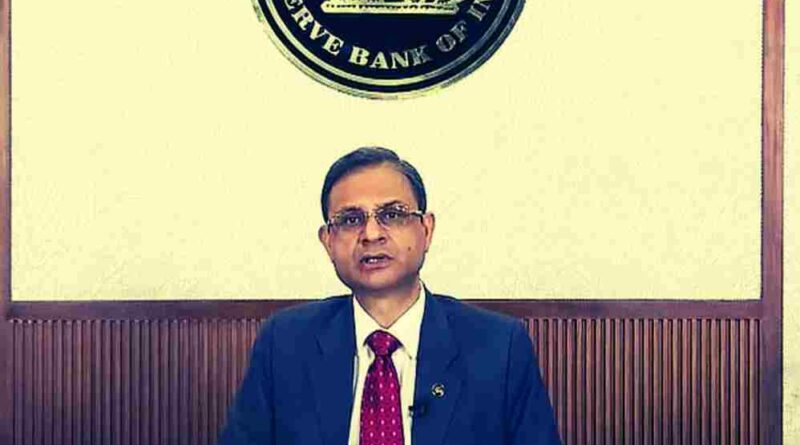RBI Governor Flags Concerns Over Potential US Tariffs, Stresses Need for Economic Resilience
In the backdrop of mounting global trade uncertainties, Reserve Bank of India (RBI) Governor Shaktikanta Das has raised a red flag over the possible economic ripples that could stem from proposed tariff hikes by the United States under former President Donald Trump’s comeback bid. While India’s domestic fundamentals remain strong, the Governor acknowledged that a more protectionist global environment could present new headwinds to India’s export-led sectors and overall growth momentum.
Speaking after the RBI’s monetary policy review, Das chose his words carefully, but his message was clear: India must remain watchful, nimble, and ready to adapt if global trade winds shift direction.
A Cautious Outlook on Global Trade
Donald Trump, currently campaigning for re-election, has hinted at sweeping tariff measures—including a universal 10% tariff on all imports and a hefty 60% or more on Chinese goods. While the focus may not be directly on India, the global ramifications of such a move could be hard to ignore.
According to Das, “If global growth is impacted due to rising trade barriers, it will naturally have spillover effects on emerging economies like India.” The RBI’s concern is not about immediate shockwaves, but the potential chain reaction a global trade war could unleash—slower global demand, weaker investor sentiment, and tightening financial conditions.
India’s Resilience Still Intact
Despite the caution, Das was quick to reaffirm confidence in India’s economic trajectory. “We are in a sweet spot of growth and stability,” he said, pointing to a strong domestic demand cycle, healthy corporate balance sheets, and a growing investment push, both public and private.
The central bank has retained its GDP growth projection at 7.2% for the current fiscal year, maintaining optimism even amid global uncertainty. Das emphasized that domestic drivers—such as robust services sector expansion, recovering rural demand, and increasing infrastructure spending—will be the backbone of growth.
But the Governor also acknowledged that any external shock, particularly from developed markets shifting to inward-looking policies, could test India’s buffers.
Not Just a US-India Story
While Trump’s policies are US-focused, their reach is global. India’s trade exposure to the US remains significant—America is India’s largest trading partner. Higher tariffs, even if not targeted directly at India, could distort supply chains, delay investment decisions, and hurt export competitiveness across key sectors like engineering goods, pharmaceuticals, and textiles.
Moreover, the spillover effect could mean currency volatility, tighter capital flows, and increased uncertainty in global commodity prices—all of which could complicate monetary policy decisions at home.
Policy Preparedness is Key
In response, the RBI is signaling a strategy of watchfulness rather than alarm. Das said the central bank will closely monitor evolving trade patterns, currency movements, and capital flows, especially in the wake of the US elections and other geopolitical developments.
The RBI, he indicated, is prepared to step in when needed—to manage liquidity, stabilize the rupee, and ensure inflation remains under control, even if the global backdrop gets bumpier.
This cautious stance is not new, but it’s increasingly necessary in a world where policy surprises are becoming the norm. India’s recent experiences with global disruptions—from the pandemic to the Ukraine war—have shown the importance of fiscal and monetary agility. The Governor’s comments serve as a reminder that the next shock may not come from a virus or a war—but from a tariff.
Investors Watching Closely
Market watchers and economists alike are parsing these signals carefully. While there’s no panic yet, investors are aware that any substantial shift in US trade policy could trigger rebalancing in global portfolios. For India, this could mean short-term capital outflows, a weakening rupee, or a spike in import costs.
However, India’s stable macroeconomic indicators—moderate inflation, high forex reserves, and a manageable current account deficit—offer a degree of insulation. The RBI has shown in recent years that it’s not afraid to act decisively to smooth out volatility, and Das reaffirmed that commitment again.
A Moment for Strategic Calm
While the political theater in the US unfolds, India’s central bank is urging for strategic calm at home. The RBI is not ringing alarm bells just yet, but it’s clearly watching the horizon for storm clouds.
As Das put it, “The world is going through a very dynamic phase…we need to navigate this with prudence and resilience.”
For Indian policymakers, businesses, and investors, the message is clear: stay grounded, stay flexible, and don’t underestimate the power of global policy to change the domestic picture—even when it’s being scripted thousands of miles away.
Disclaimer
The information and content shared on digitalgithub.com — including articles, blogs, news, guides, and other resources — is intended for general informational and educational purposes only. We do not guarantee the completeness, reliability, or suitability of any information. Always seek the guidance of a qualified professional before making decisions based on the information you read. Use this site at your own risk.

